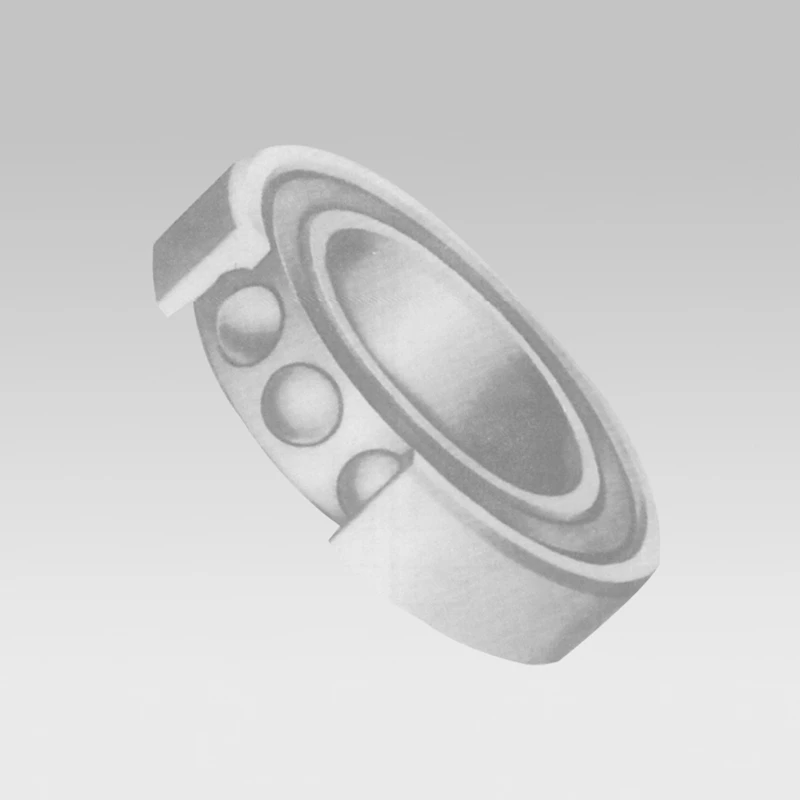
Dec . 03, 2024 18:35 Back to list
angular thrust bearing
Angular Thrust Bearings A Crucial Component in Modern Machinery
Angular thrust bearings play a pivotal role in various mechanical systems, providing essential support and reducing friction between moving components. These specialized bearings are designed to handle thrust loads, which occur when an axial force is applied to a rotating shaft. Understanding their functionality, applications, and maintenance will help engineers and designers incorporate them effectively in their mechanical designs.
What is an Angular Thrust Bearing?
Angular thrust bearings are a type of rolling-element bearing that can accommodate both radial and axial loads. Unlike standard thrust bearings that can handle only axial thrust, angular thrust bearings allow for the combination of both types of loads, making them highly versatile. They generally come equipped with balls or rollers arranged between the inner and outer races, forming a contact angle, which is crucial for their operation.
The contact angle is defined as the angle between the line of action of the load and the line perpendicular to the raceway surface. This angle determines the load-carrying capacity of the bearing and influences its overall performance. Larger contact angles can accommodate greater axial loads, while smaller angles excel in handling radial loads.
Types of Angular Thrust Bearings
1. Single Row Angular Contact Bearings These bearings support axial loads in one direction and can handle some radial loads. They are commonly used in applications where space is limited.
2. Double Row Angular Contact Bearings Designed to support loads in two directions, double row bearings are more robust and can handle higher loads compared to single-row variants. They are often found in heavy-duty applications.
3. Thrust Roller Bearings A subtype that employs cylindrical rollers instead of balls, providing improved load distribution and higher load-carrying capacity, ideal for situations involving heavy loads at low speeds.
Applications
Angular thrust bearings can be found in a myriad of applications across various industries. Some common uses include
- Automotive Angular thrust bearings are prevalent in car wheel hubs, transmission assemblies, and other rotating mechanisms that experience both axial and radial loads.
- Aerospace In aircraft engines and landing gear systems, these bearings are essential for handling the varied loads and stresses that occur during operation.
- Industrial Machinery Equipment such as conveyor systems, gearboxes, and turbines utilize angular thrust bearings to optimize performance and reliability.
angular thrust bearing

- Robotics Precise motion control in robotic arms and joints often relies on angular thrust bearings to effectively manage loads and maintain positional accuracy
.Advantages of Angular Thrust Bearings
1. High Load Capacity Angular thrust bearings can handle substantial axial loads, making them suitable for heavy-duty applications where reliability is crucial.
2. Versatile Functionality Their ability to manage both radial and axial loads means they can be used in multiple configurations and different operating conditions.
3. Durable Design With proper maintenance, angular thrust bearings can provide long service life, reducing the need for frequent replacements.
4. Reduced Friction The rolling motion of bearings minimizes friction compared to sliding surfaces, leading to enhanced efficiency and reduced energy consumption.
Maintenance Tips
To ensure the longevity and efficient operation of angular thrust bearings, regular maintenance is essential. Here are some key maintenance tips
- Lubrication Proper lubrication is crucial to minimize friction and wear. Use suitable lubricants based on the manufacturer's specifications, and check levels regularly.
- Alignment Ensure proper alignment during installation to prevent uneven wear and increase the bearing's lifespan.
- Cleaning Remove any contaminants that may accumulate on the bearing surfaces. Dirt and debris can lead to premature failure if not addressed.
- Regular Inspection Periodic inspection can help identify wear patterns and potential failure points, allowing for timely intervention before catastrophic failure occurs.
Conclusion
Angular thrust bearings are integral components in many complex machinery systems. Their ability to handle combined loads while minimizing friction and wear positions them as a favored choice in various industries. By understanding their types, applications, advantages, and maintenance requirements, engineers can effectively incorporate angular thrust bearings into designs that demand reliability and performance. The role of these bearings in modern engineering continues to be significant, ensuring smooth and efficient operations in various applications.
Latest news
-
Grooved Ball Bearing Design and Functionality
NewsJun.04,2025
-
Concrete Mixer Bearing Load Capacity Testing
NewsJun.04,2025
-
6004 Bearing Dimensions in Robotic Joint Designs
NewsJun.04,2025
-
Advantages of Single-Row Deep Groove Ball Bearings
NewsJun.04,2025
-
Applications of Deep Groove Ball Bearings in Automotive Systems
NewsJun.04,2025
-
Innovations in Bearing Pressing Machine Design
NewsJun.04,2025
